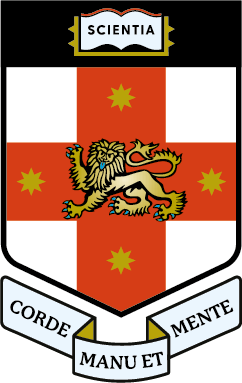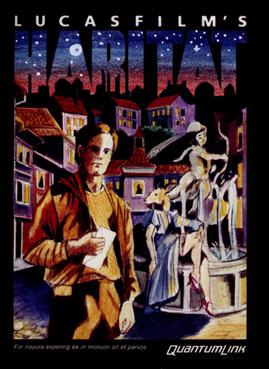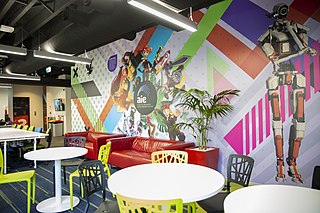
The University of New South Wales (UNSW), also known as UNSW Sydney, is a public research university based in Sydney, New South Wales, Australia. It is one of the founding members of Group of Eight, a coalition of Australian research-intensive universities. It is ranked 19th in the 2024 QS World University Rankings.

MicroProse is an American video game publisher and developer founded by Bill Stealey, Sid Meier, and Andy Hollis in 1982. It developed and published numerous games, including starting the Civilization and X-COM series. Most of their internally developed titles were vehicle simulation and strategy games.

Danielle Bunten Berry, formerly known as Dan Bunten, was an American game designer and programmer, known for the 1983 game M.U.L.E., one of the first influential multiplayer video games, and 1984's The Seven Cities of Gold.

Noah Falstein is a game designer and producer who has been in the video game industry since 1980, winning "Game of the Year" titles for multiple games such as Battlehawks 1942 and Indiana Jones and the Fate of Atlantis. He has designed games for multiple platforms, including arcade video games, Commodore 64, and MS-DOS.
A multiplayer video game is a video game in which more than one person can play in the same game environment at the same time, either locally on the same computing system, on different computing systems via a local area network, or via a wide area network, most commonly the Internet. Multiplayer games usually require players to share a single game system or use networking technology to play together over a greater distance; players may compete against one or more human contestants, work cooperatively with a human partner to achieve a common goal, or supervise other players' activity. Due to multiplayer games allowing players to interact with other individuals, they provide an element of social communication absent from single-player games.

Krome Studios Melbourne, originally Beam Software, was an Australian video game development studio founded in 1980 by Alfred Milgrom and Naomi Besen and based in Melbourne, Australia. Initially formed to produce books and software to be published by Melbourne House, a company they had established in London in 1977, the studio operated independently from 1987 until 1999, when it was acquired by Infogrames, who changed the name to Infogrames Melbourne House Pty Ltd.. In 2006 the studio was sold to Krome Studios.

Sony Interactive Entertainment LLC (SIE) is a multinational video game and digital entertainment company of Sony. Established in 2016, it primarily operates the PlayStation brand of video game consoles and products.

Habitat is a massively multiplayer online role-playing game (MMORPG) developed by LucasArts. It is the first attempt at a large-scale commercial virtual community that was graphic based. Initially created in 1985 by Randy Farmer, Chip Morningstar, Aric Wilmunder and Janet Hunter the game was made available as a beta test in 1986 by Quantum Link, an online service for the Commodore 64 computer and the corporate progenitor to AOL. Both Farmer and Morningstar were given a First Penguin Award at the 2001 Game Developers Choice Awards for their innovative work on Habitat. As a graphical MUD it is considered a forerunner of modern MMORPGs unlike other online communities of the time. Habitat had a GUI and large user base of consumer-oriented users, and those elements in particular have made Habitat a much-cited project and acknowledged benchmark for the design of today's online communities that incorporate accelerated 3D computer graphics and immersive elements into their environments.
Strategic Studies Group (SSG) is an Australian software development company that makes primarily strategy wargames.

Robert J. Mical is an American computer programmer and hardware designer who has primarily worked in video games. He is best known for creating the user interface, Intuition, for Commodore's Amiga personal computer (1985), contributing to the design of the Amiga hardware, and co-designing, with Dave Needle, the Atari Lynx color handheld (1989) and the 3DO Interactive Multiplayer (1993).
The Canberra Institute of Technology (CIT) is a vocational education provider with five campuses located in Canberra, Australian Capital Territory. CIT is the largest Technical and Further Education (TAFE) provider in the Australian Capital Territory. Qualifications offered by CIT range from certificate to degree level. CIT has campuses across Canberra, located in Bruce, Reid, and Fyshwick. CIT also has two learning centres in Tuggeranong Town Centre and Gungahlin, which are primarily for students studying via flexible or distance learning. CIT provides a wide range of education and training courses that focus on practical skills and formal, technical qualifications.

The Academy of Interactive Entertainment (AIE) is an Australian video games and computer animation school. Founded in 1996, it was one of the world's first institutions to offer qualifications in these industries. The AIE provides courses covering CGI, animation, video game asset creation and games programming. Campuses are located in Canberra, Sydney, Melbourne, Adelaide, and an online campus. The Australian ABC has said that the AIE "is one of Australia's most awarded 3D animation, game design and visual FX educators".
Video game culture or gaming culture is a worldwide new media subculture formed by video game hobbyists. As video games have exponentially increased in sophistication, accessibility and popularity over time, they have had a significant influence on popular culture, particularly among adolescents and young adult males. Video game culture has also evolved with Internet culture and the increasing popularity of mobile games, which has led to an increase in the female demographic that play video games.
The Australian Game Developers Conference (AGDC) was an annual conference held from 1999 to 2005 that brought together Australian and overseas game developers, publishers, programmers, artists, production staff, computer graphics companies, audio companies, software tool developers, buyers and suppliers to the game development industry. It was owned by the Academy of Interactive Entertainment (AIE) and was run by Interactive Entertainment Events, a subsidiary of AIE.

Christopher Erhardt was the Head of School - US Campuses for the Academy of Interactive Entertainment (AIE) from the time the school opened until his death. From 1998-2007 he was the Associate Dean as well as V.P.-Production at DigiPen Institute of Technology in the United States.
Micro Forté Pty Ltd is an Australian electronic entertainment company with development studios in Canberra and Sydney. Founded in 1985 by John De Margheriti at a time when there was little game development presence in Australia, Micro Forté has been closely linked to the growth of the Australian game development industry, with CEO De Margheriti initiating events such as the Australian Game Developers Conference (AGDC) and founding the Academy of Interactive Entertainment (AIE).
Riot Sydney is an Australian software company, formed in 2002 by John De Margheriti. It was the developer of BigWorld, a middleware development tool suite for creating massively multiplayer online games (MMO) and virtual worlds. It was the first company that developed a middleware platform for the MMO market. In 2007, BigWorld was recognised by the UK's Develop magazine as an industry leader.
The AFL video game series is a series of Australian rules football video games licensed and based on the VFL/AFL.
The United Kingdom has the largest video game sector in Europe. By revenue, the UK had the second-largest video game market in Europe in 2022 after Germany, and the sixth-largest globally. By sales, it is Europe's largest market, having overtaken Germany in 2022. The UK video game market was worth £7.16 billion in 2021, a 2% increase over the previous year.

The video game industry in Australia is worth $4.21 billion annually as of 2022, inclusive of traditional retail and digital sales. A report in 2022 by Austrade estimated that 3,228 Australians worked in the video game industry. In the fiscal year 2016–17, revenue from Australian game developers was approximately $118.5 million, 80 percent of which was from overseas sales.











